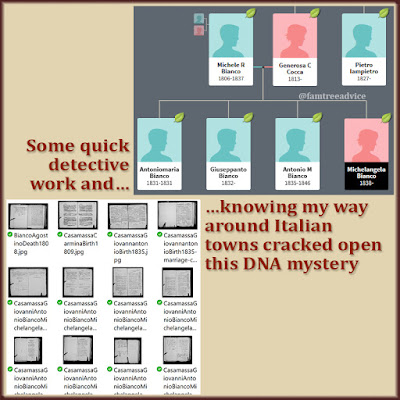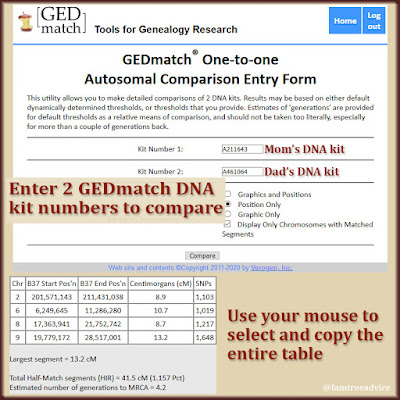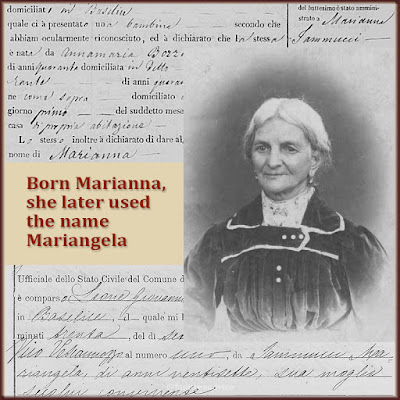My DNA matches continue to disappoint me. After ignoring them for a while, I decided to browse through my new matches. I filtered my Ancestry DNA results to show only unviewed matches with a family tree.
I quickly viewed and dismissed about a dozen of them. What good is your tree if it has 3 people? Or if you include only living, unnamed people?
At last I found someone I could latch onto and research. His family tree contains only 6 people including himself. But I knew I was looking at ancestors with ties to my mother's side. That set my expectations on what to look for.
This is why I always say you've got to learn the last names from your ancestral hometowns. I looked at this skimpy tree and saw only 2 last names: d'Onofrio and Ferro. I knew from experience that those names come from my maternal grandfather's hometown.
I searched the vital records I have on my computer for the town of Baselice. I was looking for Leonardo d'Onofrio born in 1913 and Maria Addolorata Ferro born in 1912. I found both their birth records! I felt lucky because the birth records end in 1915, and some years are missing.
 |
| If you can find one or two of your DNA match's ancestors, you're in! Do the genealogy research your DNA match can't seem to do. |
These are, without a doubt, the right people. Each one's birth record has a note in the margin saying they married the other in 1937. I have their marriage records, too.
With their documents open on one monitor, I launched Family Tree Maker on another. Would I be able to place them in my family tree? My DNA match is a 4th to 6th cousin. It may take some work to make the connection.
My first step was to check my family tree for the bride and groom—my DNA match's parents. They are not in my tree, but I can search the town's vital records for their parents. Hopefully I'll find a place where they fit.
I started with the groom's mother, Maria Teresa Pettorossi. I found her birth record in 1870. It named her parents and each of their fathers. That helped me positively ID her parents, who were already in my tree. Now I had a relationship to these people. But it wasn't a blood relationship.
I continued searching for each parent and seeing if they fit into my family tree. Because I spent 5 years piecing together the families of the town of Baselice, these new people all have a place. Unfortunately, their relationships to me are all through marriage. There was a lot of intermarrying in this somewhat isolated hill town. I'll bet I'm a 4th to 6th cousin of everyone from Baselice.
The best part of this exercise is how it's filling in missing marriages. There are tens of thousands of vital records available for this town. But the marriage records end in 1860 and pick up again in 1931. If I follow the children and grandchildren of the 1850s babies in my tree, I can figure out who they married.
I always intended to figure out missing marriages this way. This new DNA match is a good reason to start.
 |
| Because this is "my" town, I added several generations in a heartbeat. |
There is one person in this family group I can't positively identify. I need an Angelamaria Petruccelli born in about 1851. There were 2 babies with that name born a few months apart, and I can't be sure which is the right one.
Because of that uncertainty, I can't go any further. As of now, this DNA match has at least 6 different relationships to me. But each one involves a marriage somewhere up the line.
Don't be too disappointed if you can't find a meaningful relationship to a distant DNA match. Focus on your closer matches. Then use the more distant ones to fill in some gaps in your own family tree. Take the facts they know from oral history, and back them up with documents.
And speaking of DNA matches:

















